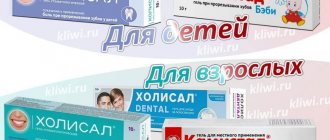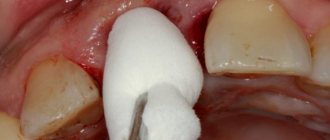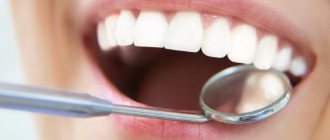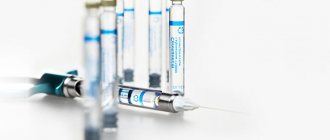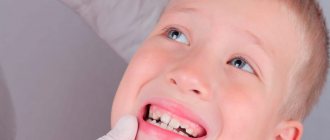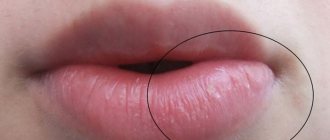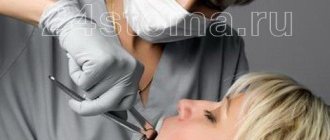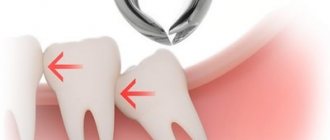The lips are skin-muscular folds, the structure of which is divided into three parts - cutaneous, intermediate and mucous. The pink areas, the so-called vermilion border of the lips, are covered with a transparent stratum corneum, which is exposed to high temperatures, chemicals, and ultraviolet radiation. They contain 100 times more nerve fibers than the fingertips. Therefore, a lip burn is always accompanied by burning, acute pain and itching. The injury causes severe discomfort and makes eating difficult. Delayed or incorrect treatment leads to infectious inflammation.
Why is a lip burn dangerous?
Lips are one of the most unprotected areas of the body, subject to the destructive effects of chemicals, high temperatures, and radiation. Burns are often accompanied by damage not only to the skin, but also to the oral mucosa. Tissue injury leads to:
- throbbing pain;
- burning;
- redness;
- blistering;
- detachment of the mucous epithelium.
Failure to promptly treat wounds with antiseptics can lead to tissue infection. After healing, noticeable scars and white spots remain on the lips.
Types of burns
Burns lead to the destruction of skin cells and mucous epithelium that covers the inner surface of the lips. Injury occurs when contacting:
- chemicals - acids, alkalis, lime;
- high temperatures - boiling water, hot objects;
- radiation - ion or light radiation.
The greatest danger is chemical burns. In 35-40% of cases they are complicated by infectious inflammation, which prevents the tissues from healing. Damaged lips with bleeding wounds worsen the quality of life. A person cannot eat properly or communicate with others. Severe burns cause problems breathing and sleeping.
Thermal
Indicators of burn injuries in the world range from 250-350 cases per 100 thousand people. Moreover, about 30% of all thermal burns are accompanied by damage to the lips. The cause of injury is the thermal factor. Contact with liquids and objects whose temperature exceeds 42°C inevitably leads to the destruction of skin cells.
Young children and women are more susceptible to injury. In 39% of cases, the mucous membrane of the hard palate, gums and tongue are simultaneously damaged. Burns are caused by:
- hot objects;
- boiling oil;
- hot water, etc.
Based on the depth of damage, superficial and deep burns are distinguished. The higher the temperature of the liquid or hot object, the more serious the lip injury. Sometimes not only the skin or mucous membranes are damaged, but also the muscles with the subcutaneous fat layer.
Solar
The spectrum of solar radiation has an ultraviolet part, which is electromagnetic waves with lengths from 10 to 400 nm. Short-wave UV rays in the range from 100 to 280 nm have a detrimental effect on the skin and mucous membranes. They destroy protein components, causing 1-3 degree burns.
Ultraviolet irradiation is possible when sunbathing or visiting solariums. Signs of sunburn include:
- burning;
- swelling;
- peeling of the skin;
- pain when touched.
At the first sign of sun injury, you should stop using the solarium or stop sunbathing.
Chemical
Chemical burns can occur from contact with irritating substances, which include:
- iodine;
- lime;
- ammonia or medical alcohol;
- concentrated soda solution;
- battery electrolytes;
- aggressive detergents, etc.
The degree of damage to the skin and mucous membranes of the lips depends on three factors:
- reagent concentration;
- duration of contact with the chemical;
- presence of cracks on the lips.
In 84% of cases, chemical burns are accompanied by death of the affected tissue. When acids come into contact with the skin, dark brown scabs form. But the greatest danger comes from burns from alkalis. They penetrate deep into the skin and fatty tissue, causing 3rd degree burns.
The danger of chemical injuries lies in the toxic effects of certain substances. The penetration of some of them into the blood leads to poisoning of the body, as evidenced by:
- diarrhea;
- dizziness;
- weakness in the body;
- pale skin;
- excessive sweating, etc.
Failure to provide assistance in a timely manner leads to even greater damage to the lips, oral mucosa, esophagus, etc.
Ray
Radiation burns are often a consequence of radiation therapy in the treatment of malignant tumors in the maxillofacial area. Ionizing radiation spreads to healthy areas of the mucous membrane and skin. The following symptoms indicate radiation injury:
- redness of lips;
- swelling;
- numbness;
- erosion.
Over time, the affected areas of the mucous membrane become cloudy and lose their natural shine. As the radiation dose increases, a sticky coating forms, which indicates tissue necrosis. Damage to the salivary glands leads to excessive salivation. Over time, it gives way to dryness.
Degree of damage to skin and mucous membranes
Clinical manifestations of burns and methods of their treatment depend on the depth of tissue damage.
It is very important not to apply oily products to such burns, since oils only promote the proliferation of pathogenic microorganisms.
Each degree corresponds to specific symptoms that determine the severity of the damage:
- First. The cells of the outer layer of skin and mucous epithelium on the inner surface of the lips are destroyed. It manifests itself as moderate swelling, redness, pain or burning. A mild burn can be treated for no more than 3-5 days with regenerating and antiseptic agents.
- Second. All layers of the skin are damaged up to the basement membrane, which is adjacent to the dermis. The second degree is accompanied by swelling, redness, and blisters. Symptoms disappear within 10-14 days with adequate treatment.
- Third. The epidermis, superficial or even all layers of the dermis are destroyed. The damaged area turns bright red and blisters form on it. Due to the burn of sensory receptors, painful sensations are dulled.
- Fourth. Cells of all layers of the skin die, down to the subcutaneous layer, which consists of adipose and connective tissue. The muscles and bones of the lower or upper jaw are damaged.
With deep injuries, the mucous membrane swells and turns outward. Because of this, the red border of the lips visually resembles the mouth of a fish.
First aid algorithm
If lips are injured by chemicals or boiling water, it is necessary to provide emergency assistance to the victim. The speed of tissue healing depends on the timeliness and correctness of actions.
Algorithm for providing first aid:
- Washing. For any type of burn, you need to wash the damaged areas of your lips with running water. The procedure should take at least 10 minutes.
- Neutralization of the reagent. If the burn is caused by alkalis, they are neutralized with a weak solution of citric acid. If acid gets on the lip, use a soap or 5% soda solution.
- Anesthesia. To eliminate the burning sensation, take an anesthetic drug - Nimesulide, Ketorolac, Nurofen, etc. To enhance the analgesic effect, the victim is given 1 tablet of Spazmex, Romazulan or Spazmalgon.
For burns caused by quicklime, do not wash your lips with water. In such a situation, use a 20% sugar solution. Cotton pads are moistened in it and applied to injured skin and mucous membranes. Further therapy depends on the degree of damage to the lips. If there is severe drooling, throbbing pain and mucosal detachment, consult a doctor.
When to see a doctor
See your doctor if your lips aren't healing properly or you have pus-filled blisters surrounded by red streaks—this is a sign of infection. You will likely be prescribed a topical ointment and an antibiotic.
Additionally, severe sunburn (aptly called sun poisoning) is characterized by the following symptoms:
● Dizziness.
● Fever and chills.
● Headaches.
● Nausea.
● Severe blistering and pain.
● Signs of infection.
If you experience these symptoms, consult your doctor as this is a serious condition.
How to treat a lip burn: restorative therapy
Treatment of burn injuries is aimed at eliminating inflammation and restoring tissue integrity. Superficial burns are treated with topical medications at home. If the cells of the dermis and subcutaneous fat are destroyed, the victims are hospitalized in a burn center.
Pharmacy products
Anti-burn ointment, gel or spray will help reduce pain and inflammation in the affected areas. Treatment for superficial burns includes:
- Pantestin is a wound-healing gel with dexpanthenol, which has anti-inflammatory properties. Apply exclusively to the skin in a thin layer three times a day.
- Rescuer is a cream with regenerating, softening and antiseptic action. Prevents skin from cracking when crusts form on the lips.
- Panthenol is a hygienic lipstick with provitamin B5, which stimulates scarring of the skin. Contains shea butter, therefore it has a softening effect on burned tissues. Use no more than 4-5 times a day.
- Levomekol is an antimicrobial agent with wound healing and anti-inflammatory properties. A compress with ointment is applied to the burned areas of the lips three times a day.
- Levosin is a combined antimicrobial ointment that accelerates the exfoliation of dead tissue. Prescribed for purulent inflammation of the lips, non-healing ulcerations.
To treat the inner surface of the lips, solution antiseptics are used - a weak solution of tannin or furatsilin. Pain is relieved with non-narcotic analgesics - Tempalgin, Ibuprofen, Baralgin.
Traditional methods
Alternative medicine is used to speed up metabolism in the skin, increase local immunity, and disinfect the oral mucosa.
As a concomitant treatment, too hot dishes, as well as spicy, salty, smoked and spicy foods, which slow down the wound healing process by irritating the mucous membrane, are excluded from the patient’s diet.
For burn injuries of the lips the following are used:
- Chamomile decoction. 1 tbsp. l. herbs are poured into 250 ml of water and boiled for 10 minutes. Rinse with the strained broth every 1.5-2 hours.
- St. John's wort decoction. 10 g of raw material is poured into 300 ml of water and boiled for 5-7 minutes. Moisten gauze or cotton pads in the decoction and apply to the lips for 30 minutes 4-5 times a day.
- Burdock and plantain. Burdock root and plantain leaves are crushed and mixed in equal proportions. The pulp is wrapped in sterile gauze and applied to the lips three times a day for 20 minutes.
- Ointment with oil. Chalk is mixed with olive oil until a creamy mixture is obtained. Apply to the damaged area 3-4 times a day.
Sea buckthorn oil is used to disinfect and soften the mucous membranes of the lips. It is recommended to use the product until the tissues have completely healed.
How to choose a cosmetic product that protects against ultraviolet radiation
Sun cream can have different levels of protection. It is designated SPF with various coefficients. For a walk around the city on a clear spring day, a cream with SPF 2-5 is enough. If you are going to be outside for several hours (picnic, working in your garden), you need a product with SPF 5-10. For those who have white skin prone to freckles, it is better to use sunscreen cosmetics that provide intense protection (SPF 20-30). When going on holiday to a region with a hotter climate, take SPF 50 cream with you. If you want to swim, use a waterproof product. Sunscreen be applied 20 minutes before leaving the house.
To look good on hot days and prevent the appearance of early wrinkles, choose products containing vitamins and antioxidants. They protect not only from ultraviolet rays, but also take care of the skin.
What is prohibited to do
Burns of thermal and chemical origin are accompanied by swelling and the appearance of blisters. Crusts form in the burned tissues, tightening the skin. Incorrect treatment often leads to complications, so doctors do not recommend:
- puncture the bubbles;
- touching lips with dirty hands;
- cauterize wounds with alcohol;
- use compresses with tinctures;
- Treat burns with egg white or yolk.
Excessive drooling is a sign that you need to urgently call a doctor at home.
Self-medication for 3rd degree burns is dangerous due to purulent inflammation and phlegmon.
Treatments to avoid
Avoid using petroleum jelly and any moisturizers that contain petroleum jelly. Although oil is effective at retaining moisture, it cannot restore moisture once it has been lost.
Lidocaine and benzocaine are effective local anesthetics but are not suitable for treatment because they are not intended for use on the lips; they can also cause an allergic reaction.
You should avoid blisters and let them resolve on their own. The blisters create a protective barrier, preventing germs from entering; the fluid inside protects the damaged skin from further injury.
Prevention
In 85% of cases, lip injuries occur due to careless handling of chemicals and hot liquids. To avoid getting burned, you need to take precautions:
- move detergents out of the reach of children;
- use a protective mask when working with chemicals;
- apply sunscreen to your lips while tanning or visiting a solarium;
- drink non-hot tea, the temperature of which is maximum 40°C;
- mark containers with aggressive chemicals;
- Do not open bottles with reagents with your teeth.
It is recommended to keep medications with dexpanthenol (Pantestin, Depantol, Pantoderm) in your home medicine cabinet in case of a burn. Correct provision of emergency care prevents deepening of the wound and purulent complications.
How to choose after-sun cosmetics
To ensure that your skin quickly recovers after sunbathing and looks -sun cream or milk . It contains hydrants that replenish water reserves in cells, soothing and softening ingredients that prevent flaking. To quickly heal minor burns, you can use cosmetics rather than medications. It is convenient to use cosmetics produced in the form of sprays. By pressing the sprayer several times, you will apply the product evenly.
Sprays or creams are available that need to be rubbed in with light massage movements for the face and body. It is better to purchase two products from the same brand: one for the face, where the skin is more delicate and requires care, the other for the body. Use them every time you go out in the sun to restore moisture balance and prevent photoaging.
After-sun cosmetics are available for different skin types. For oily skin, a lighter texture is needed, for dry skin - a high content of hyaluronic acid, for sensitive skin - extracts of aloe and other medicinal plants.
